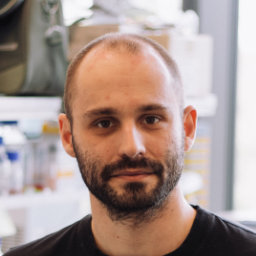Alleviate disuse atrophy and reloading injury, to allow for better muscle regrowth

Most of us have probably seen videos of astronauts exercising in space, and we know that it is because our muscles deteriorate and become weaker when not being used. For this reason, astronauts will be using specially designed exercise machines trying to at least limit their muscle loss while in space. This muscle deterioration, called atrophy, also occurs on Earth, when people are bed-ridden for a period of time for example. Just as important as preventing muscle atrophy is trying to understand what happens afterwards when the astronaut returns to Earth, or when the patient is able to leave the hospital bed again. Atrophied muscle is not used anymore to carry the load of the human body. Although it will quickly start to regrow, a process called hypertrophy, it will nonetheless be subjected to reloading injury during this process, with small tears in the muscles causing soreness and inflammation. One of the projects in our laboratory is to better understand this chain of events: disuse atrophy, reloading injury and hypertrophy. To do this, we are using a mouse model of muscle unloading and reloading, where the mouse doesn’t use its hind legs for a couple of days and is then allowed to use them again normally afterwards. Using techniques such as RNA sequencing and mass spectrometry that allow us to look at sub-microscopic changes taking place inside the muscle cells, we are identifying genes and proteins that are involved in these events. With this information, we hope to better be able to monitor how much muscle deteriorates and how well it can recover afterwards. This might pave the road for us to develop drugs and to prescribe specific exercises that could alleviate disuse atrophy and reloading injury, to allow for better muscle regrowth.


